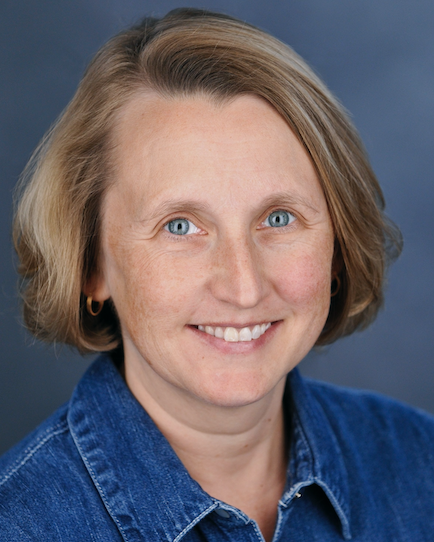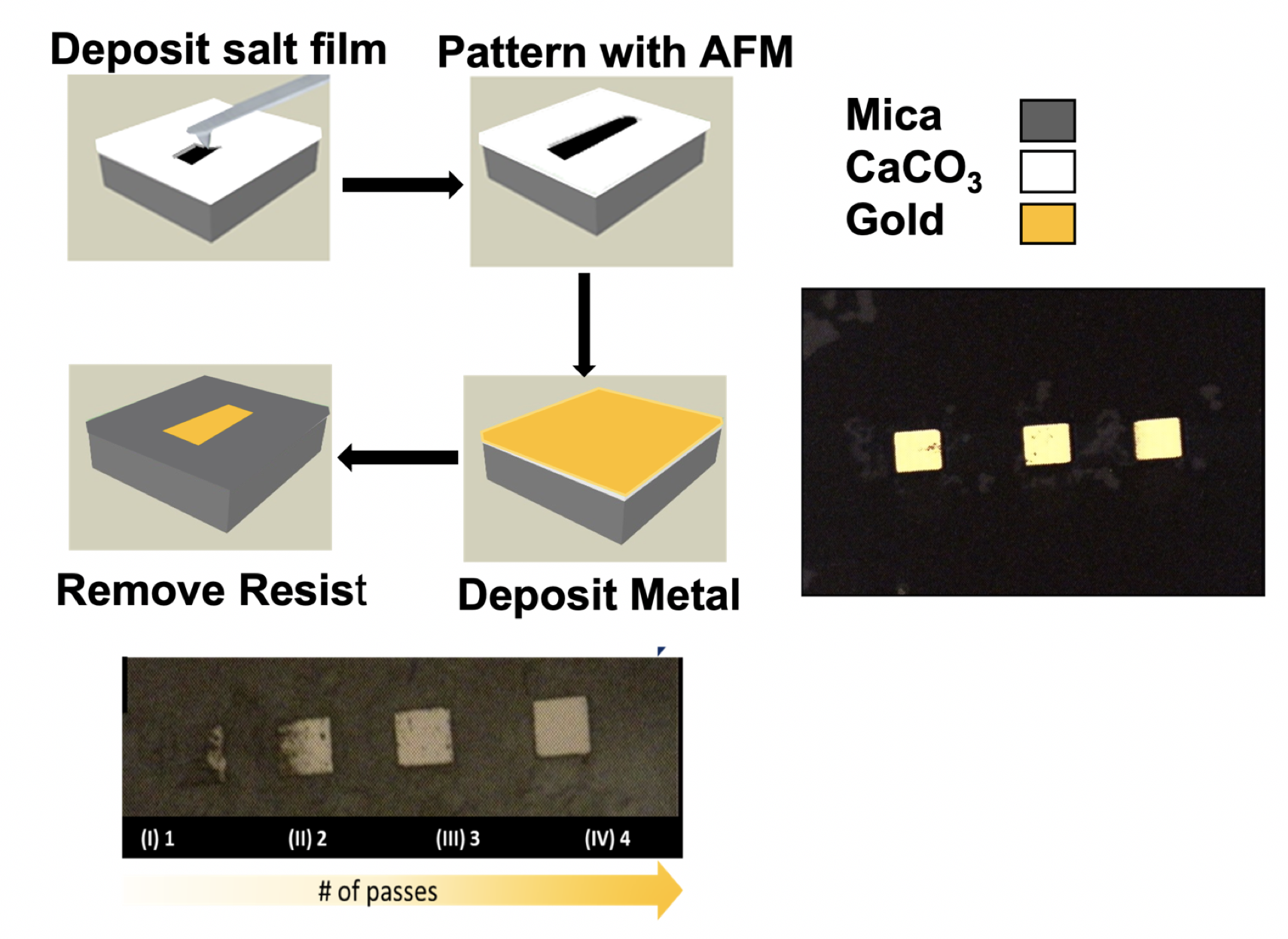Cindy L. Berrie: December 2021 Sutton Family Research Impact Award Recipient
The Department congratulates Dr. Cindy L. Berrie on receiving the December 2021 Sutton Family Research Impact Award! Please read more about her research below.

Atomic Force Microscopy-Based Static Plowing Lithography Using CaCO3 Nanoparticle Resist Layers as a Substrate-Flexible Selective Metal Deposition Resist
Prof. Cindy Berrie and graduate students in her group, Dr. Sasanka Ulapane, Dr. Jennifer Doolin, and Dr. Monisola Okeowo recently published a paper (J. Phys. Chem. C ,2021, 125, 23490-23500) in which they explored the use of novel resist materials for the fabrication of metal nanostructures. The ability to precisely fabricate materials at the nanoscale is critical for a variety of applications including electronics, biosensing, and catalysis. However, there are challenges with fabrication at this length scale that have not been fully addressed. Typical resist materials used for nanofabrication are materials such as polymers that cannot typically withstand high temperature processing and deposition conditions used and fabrication. In addition, they can contaminate the resulting structures and are difficult to remove completely. In this recent work, the Berrie group explored the use of salt films as an alternative resist layer in the nanofabrication process and demonstrated that nanoparticle films of salts such as CaCO3 can be used to precisely pattern features on a variety of substrates including glass, silicon, and mica. The films can be patterned by using the force of an AFM (atomic force microscopy) probe tip to selectively remove the film under the probe tip and expose the underlying substrate. The salt film then serves as a mask for the thermal evaporation of metal in the patterns. This method provides a substrate tolerant, thermally robust method for fabrication of a wide range of features including metal nanostructures and should be adaptable for a wide range of applications including biosensing and photovoltaic devices.
